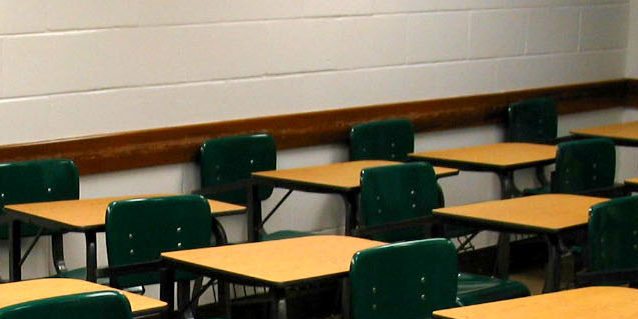
Given that people of all races commit crimes at generally the same rates, the massive disparities in imprisonment in this country are horrifying.
Today in the United States of America, one out of every nine black children and one out of every 28 Hispanic children has had an incarcerated parent. In comparison, one in 57 white children, or fewer than two percent, have had a parent incarcerated.
When a parent is sent to jail, it can traumatize the child and have long-term impacts comparable to those of being neglected, abused, or witnessing domestic violence. For example, when people undergo trauma, their bodies receive an overload of stress hormones, which can impede brain development. These hormones also increase cholesterol and blood pressure, and put a person at risk for Type 2 diabetes, arthritis, and gastrointestinal disease, among other lifelong medical conditions.
The impacts are also emotional and behavioral. Traumatized people are at higher risk for depression, anxiety, PTSD, eating disorders, substance abuse, aggression, and future victimization. Over 90% of adolescents hospitalized for psychiatric problems have a history of trauma, and more than 70% of adults in substance abuse treatment programs have had at least one traumatic experience. Most relevant to this piece: more than nine out of every ten young people involved in the juvenile justice system report trauma .
Trauma sticks in the body, and contributes to dysregulated emotions, troubled behavior, relational problems, and physical illness, making it difficult for traumatized young people to thrive. Imagine a boy whose life is disrupted by his father’s incarceration. It’s very easy for his trauma responses to look like misbehavior. He might act out when a teacher raises her voice to quiet the class, or refuse to participate, or have a hard time sitting still. Couple this with overworked teachers and under-resourced schools, and we have a situation where a traumatized child is being punished when he needs nurture.
It gets worse. Many schools have implemented zero-tolerance disciplinary policies (which are disproportionately applied to students of color) under which students are suspended or expelled for minor infractions. These young people are often unsupervised and without productive activities. They fall behind on their coursework, making the prospect of dropping out that much more appealing. This puts them at higher risk for arrest and imprisonment.
In addition, many schools now rely on police, rather than teachers or administrators, to maintain discipline. This has led to a rise in school-based arrests, bringing kids to court for disruptive behavior that otherwise would have landed them in the principal’s office—the same disruptive behavior that could easily have trauma at its root.
And the circle continues. Children can be traumatized by their parents’ incarceration, and because of racial disparities in the criminal justice system, children of color are particularly vulnerable to this trauma. They act out in school in response, and overworked teachers and under-resourced schools rely on discipline, zero-tolerance policies, and in-school policing to maintain order. And thus, traumatized youth find themselves in the criminal justice system. It’s not the school-to-prison pipeline. It’s the trauma-to-prison cycle.
But it doesn’t have to be this way. Instead of the isolation and marginalization that comes from involvement in the criminal justice system, traumatized people need holistic care that recognizes and fortifies existing resiliencies. With treatment and support, healing is possible.
While some traumas, such as domestic violence, happen more or less equally to members of all racial groups, others, like community violence, tend to concentrate around poverty, which people of color also experience at disproportionate rates.
Rachel Smith is currently a Psychology Intern at MSAHC in her final year of a PsyD in Clinical Psychology. She completed her qualitative dissertation examining complex trauma and behavioral adaptations in court-involved young adults in an urban Chicago neighborhood. She earned her M.A. in Mental Health Counseling from Richmont Graduate University specializing in trauma therapy. At MSAHC, she works as a part of a team to provide holistic, free medical and mental health care to adolescents and young adults who have frequently been systemically marginalized as well as traumatized.
The Mount Sinai Adolescent Health Center is located in New York City. It provides comprehensive, confidential, judgment free health care at no charge to over 10,000 young people every year.


